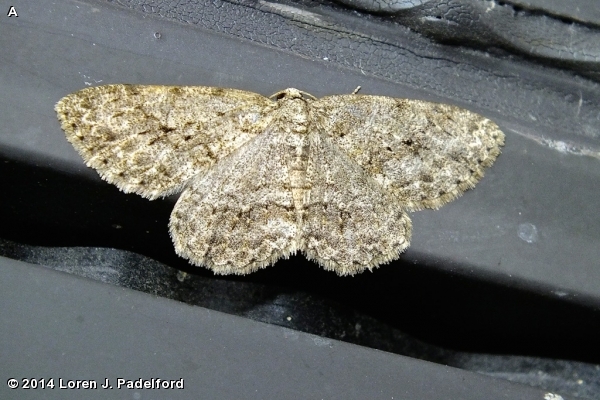
The wing color is variably pale gray with a white PM line to sooty brown with a white subterminal line. The wings have black peppery spots and black and white zigzag lines. The amount of dark banding varies from heavy to almost none. The darkest mark on the forewing along the postmedian line near the center of the wing distinguishes it from the similar smaller Porcelain Gray (Protoboarmia porecelaria). The larva is called Saddleback Looper and and is a twig mimic. The head is light gray with darker brown herringbone patterning. The body has gray, brown and white broken middorsal and subdorsal stripes.
The frequency of occurrence in this area is not known. The adults fly from March to October. The moth shown here was photographed at Fontenelle Forest Nature Center in late April 2014. There is one generation a year. This moth is found in all of North America (except the Yukon and Northwest territories) and throughout Asia.
The larvae eat the leaves of various trees including apple, birch, elm, hemlock, oak, poplar, spruce tamarack and willow. The species overwinters in the pupal stage in soil or debris. The twig mimic larva remains rigid after being disturbed.
Disclaimer: The content of NatureSearch is provided by dedicated volunteer Naturalists of Fontenelle Forest who strive to provide the most accurate information available. Contributors of the images retain their copyrights. The point of contact for this page is: Babs Padelford.

